Explore the best destination in Udaipur
Rajasthan’s best-selling items range from precious stones jewelry, bright colorful textiles, meenakari items, gemstone paintings, oxidized silver & copper items, Pichwai & miniature paintings, sculptures, panels, paintings, and other items in marble stone in Udaipur.
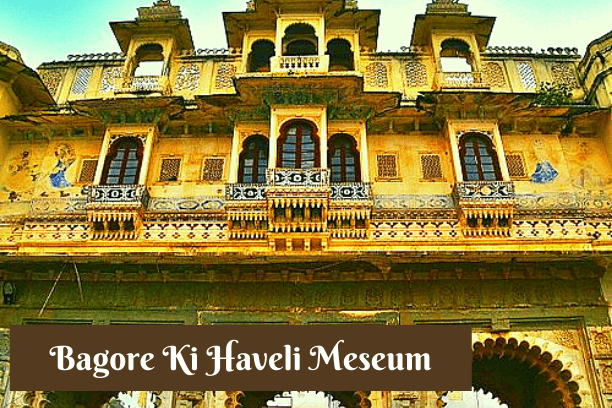
One of the famous places to visit in Udaipur, Bagore Ki Haveli is a haveli that stands magnificently on the waterfront of the surreal Lake Pichola at Gangori Ghat. Built in the 18th century by Amar Chand Badwa, the then Prime minister of Mewar kingdom, Bagore Ki Haveli has been restored over a period of time and is now converted into a museum.
- Bagore Ki Haveli Udaipur Entry Fee
- 100 per person for Domestic Adult
- 50 per person for Domestic Children (Age between 5 to 12)
- 150 per person for Foreign Adult
- 50 per person for Foreign Child
- 100 for Camera / Video
Dharohar Dance Show entry fee
- 90 per person for Indians
- 45 per person for Children
- 150 per person for Foreign Adult
- 75 per person for Foreign Child
- 200 for Any Camera
- History
Shri Amarchand Badwa, who served as the Prime minister of Mewar kingdom during the reign of Maharanas Pratap Singh II, Raj Singh II, Ari Singh, and Hamir Singh from the period of 1751 to 1778, built Bagore Ki Haveli. Following the death of Amarchand Badwa, the haveli came under the possession of the Mewar royal family and became the abode of Nath Singh, a relative of the then Maharana. In 1878, Maharaj Shakti Singh of Bagore further extended the haveli by building the triple-arched gateway and since then it is known as Bagore ki Haveli. Till 1947, the haveli remained in the possession of Mewar State. Post India’s Independence, the Haveli was used by the Rajasthan government for housing government employees. The haveli was neglected for almost forty years and later in 1986, the Government eventually decided to hand over the restoration work to the West Zone Cultural Centre.
- Best Time to visit Bagore ki Haveli
The Winter months from September to March are considered as the Best months to visit Bagore ki Haveli as the weather is quite pleasant during this time with the maximum temperature reaching just around 28.3°C. It is advisable not to visit the Haveli during summers to avoid the extreme heat of the city. The first structure to be built here was the ‘Rai Angan’, from where on the construction of the complex was taken up with full vigour and finally completed in the year 1559. However, many changes were made to the then existing structure, which were spread over a period of 400 years. Rulers such as Udai Singh II added a few structures here, including 11 small separate palaces. Upon the Maharaja’s death, his son Maharana Pratap succeeded him but was unfortunately defeated by Akbar at the Battle of Haldighati. Udaipur was overtaken by the Mughals but was returned to Maharana Pratap’s son after Akbar’s death.
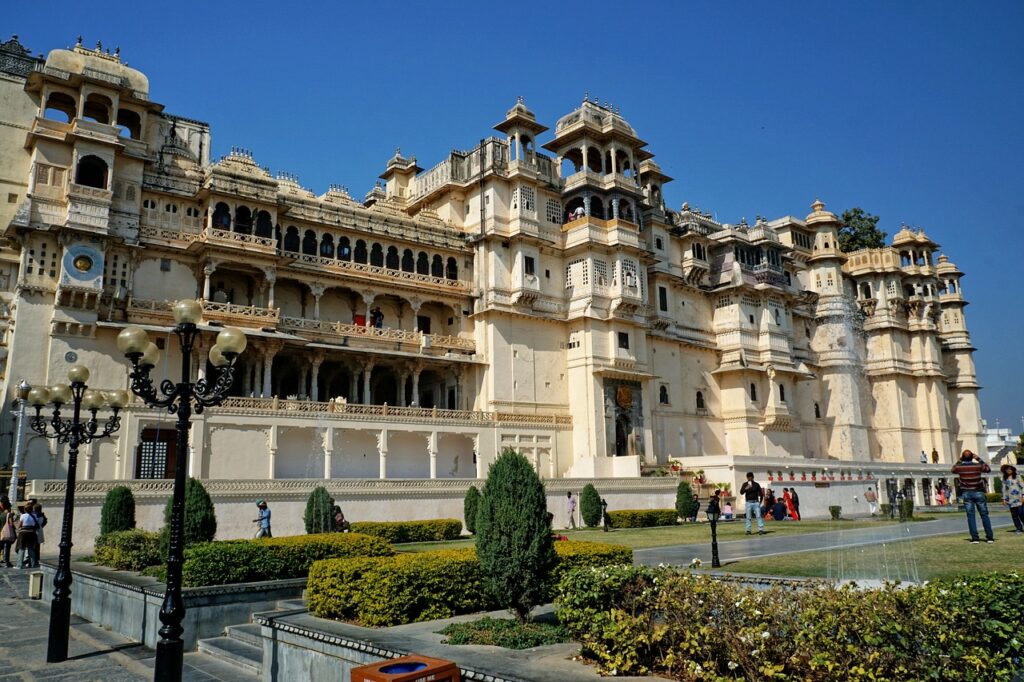
Built on the banks of Lake Pichola, the City Palace in Udaipur is considered to be the largest royal complex in Rajasthan. The magnificent palace was built in the year 1559 by Maharana Uday Singh and served as the main seat of power, where the Maharanas lived and administered the kingdom from. Subsequently, the palace was made even more splendid by his successors, who added a number of structures to it. The Palace now has an assortment of Mahals, courtyards, pavilions, corridors, terraces, rooms and hanging gardens. There is a museum here as well that showcases some of the finest elements of Rajput arts and culture – from colourful paintings to the typical architecture found in Rajasthani palaces.
- City Palace Of Udaipur Entery Fee
- 300 for Adults (Above 18 years)
- 100 for Child
- 100 for student
- 200 for Camera
- History of City Palace
The history of the palace is tied to that of the Mewar kingdom, which had reached its heights near the territory of Nagda. The kingdom’s founder was Guhil, who established the Maharana dominance in the year 568 AD. Subsequently, his successor Maharana Uday Singh II inherited the Mewar kingdom at Chittor in 1537, but the threat of losing control of the kingdom to the Mughals compelled him to move the capital to a region near Lake Pichola. Flanked by forests, lakes and the mighty Aravalli Hills, the new city of Udaipur was safe from invaders and went on to build the palace on the advice of a hermit. The increasing offenses by the Marathas forced Maharana Bhim Singh to sign a treaty with the British, accepting their protection. The palace was under their control until Indian independence in 1947 and the Mewar Kingdom was merged with democratic India in 1949.
- Best Time To Visit City Palace
Morning and evening hours are cooler and less crowded. Winter months from October to March are preferable to visiting City Palace.
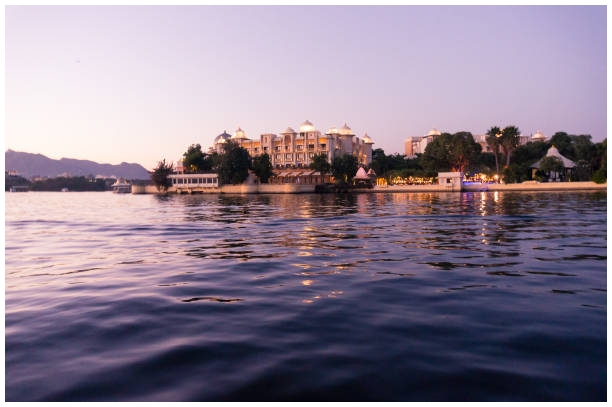
Nestled in the heart of Udaipur City, Lake Pichola is one of the largest manmade freshwater lakes in India. It is the home to the well known Gangaur Ghat and lies in close proximity to several tourist attractions. This breathtaking beauty offers the perfect setting for visitors where they can immerse in its irresistible charm. The serene surrounding with the Aravalli Range in the backdrop looks straight out of the postcard. It is the main highlight of Udaipur and allure tourists from far and wide. Lake Pichola is 4 kilometres long and 3 kilometres wide with a catchment area of 55 kilometres.
- Lake pichola entry fee
- 400 for Adults
- 200 for Children
- Sunset boat ride fee
- 700 for Adults
- 400 for Children
- History of Lake Pichola
Lake Pichola was constructed in the year 1362 by Banjara under the patronage of Maharana Lakha. Maharana Udai Singh was truly mesmerized by its charm and founded Udaipur City on its bank. He also enlarged the lake by constructing a dam on the lakeshore. All the other islands, temples, ghats and palaces developed over a period of time. The four main islands include the Jag Mandir, Jag Niwas, Mohan Mandir and Arsi Vilas. In the year 1623, Prince Khurram who rebelled against the Mughal King Jahangir took refuge under Karan Singh II and was housed in the grand palace of Jag Mandir.
According to legends, Maharana Jawan Singh promised a tightrope walker (Natani) that half of Mewar City would be gifted to her if she could cross Lake Pichola over a tightrope. Before she could reach the other end, the rope was cut resulting in her death. While dying, the girl cursed the king‘s family that he would never have a direct heir to the throne. The curse came to be true because the seven rulers who succeeded Jawan Singh were not his own descendants but adopted sons.
- Best Time to Visit Lake Pichola
Winter (October to March) is the ideal time to visit Udaipur and absorb the beauty of Lake Pichola. It looks delightfully calm and mesmerizing that is therapeutic to the mind and soul. The days are usually pleasant and the nights are colder. Temperature varies between 10 degrees Celsius and 25 degrees Celsius.

Even though the name is changed, the faith and devotion attached to Lord Shiva remain the same. The purpose of these temples, mosques, churches, and monasteries is to help human beings forget their worries and attain spirituality. They are the treasure of the vast history, culture, traditions, and beliefs of ancient people and a reflection of their glorious lives.
- Ekling Ji temple has no entry fee
- History of Ekling Ji Temple
The history of Eklingji Temple is recorded in the Ekalinga Mahatmya, a historical text written in the 15th century. According to the text, the original temple was built in 734 A.D. by ruler Bappa Rawal. The temple has been a victim of loot and plunders during the rule of the Delhi Sultanate. The original temple and its idols were physically damaged. In the late years, the temple was renovated and modified by many kings to preserve the glory and faith of the people in Shri Eklingji. The temple originally belonged to the Pashupata sect, then the Nath sect and in the post 16th century it is managed and controlled by Ramanandis.
- Best time to visit Ekling Ji Temple
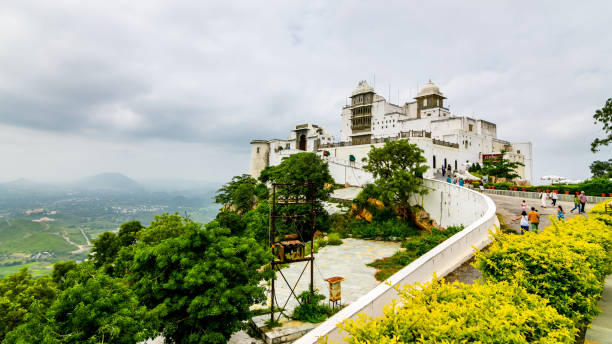
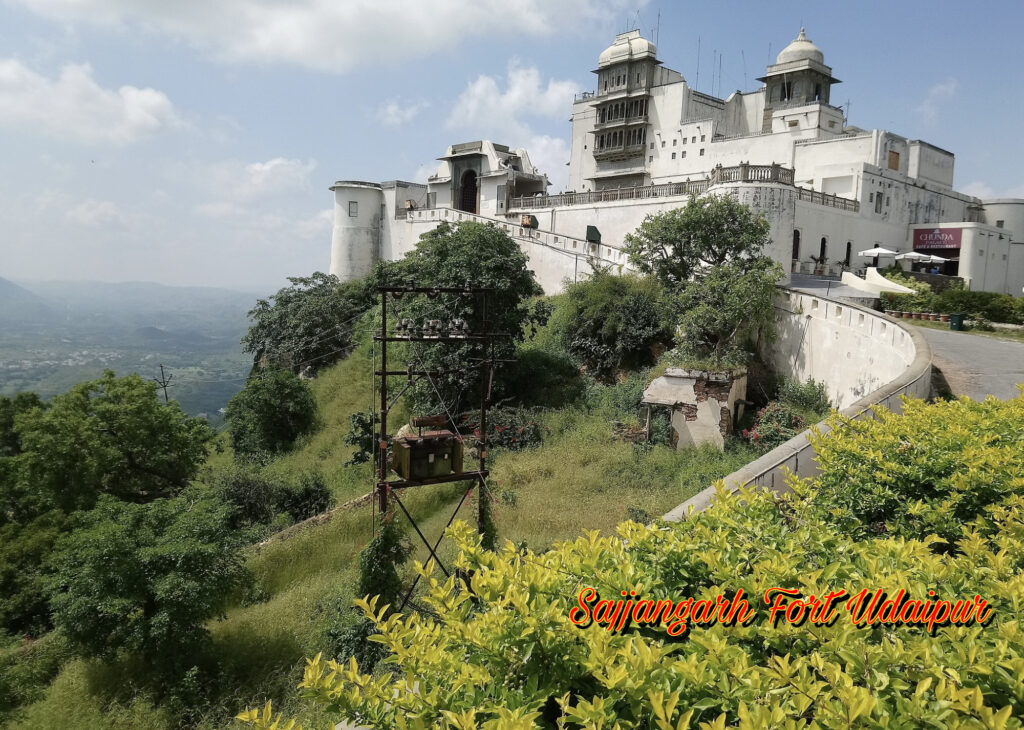
Looming at a great height, the fort offers an exhilarating bird eye view of Udaipur city overlooking the two lakes – The Pichola & Fatehsagar. Previously the palace was owned by the royal family of Mewar but now it is controlled by the Forest department of Rajasthan Government. The importance of the fort lies in it’s unique location to give it’s visitors an astounding and charismatic view of the city.
- Sajjan Garh Monsoon Palace entry fee
- 10 for Indians
- 80 for foreigners
- History of Sajjangarh Monsoon Palace
Perched on a high summit of Banasdara mountain of Aravalli hill range, just like a bejeweled tiara stands the glorious Sajjangarh fort. It is a white marble palace. The fort is situated 5km (2 miles) to the west of Udaipur city at an altitude of 944m (3100 ft) above sea level. It was built in 1884, by the seventy-second ruler of the Mewar dynasty, Maharana Sajjan Singh. He was considered a renowned ruler and a “Man of Vision” and was also honored with the title of “Grand Commander of the Star of India” in 1881. Having a deep passion for astronomy, Maharana Sajjan Singh intended to construct a nine-story astronomical center that could facilitate the tracking of monsoon clouds and diagnose the weather conditions. Hence popularly known as the monsoon palace. The other reason that added to the building up of the fort was to serve as a holiday home and hunting lodge for the royal family and also to give Maharana a view of his ancestral home in Chittaurgarh. Due to his untimely demise at the age of 26, his dream remained unfulfilled with the shelving of his plans by the construction of the partial three-story building. But during his reign (1874-1884) Udaipur was recognized as the second Municipality in India after Bombay. The construction of Sajjangarh is considered the most ambitious project which Maharana undertook during the span of his rule.
- Best time to visit Sajjangarh Fort
The time to visit the Sajjan Garh monsoon palace is from 08 am to 06 pm. it is open on all days of the week.
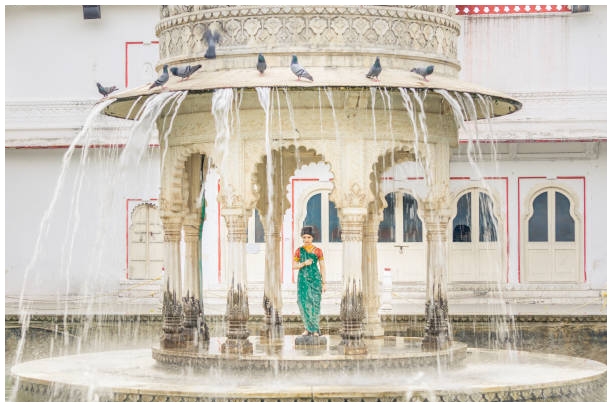
Aristotle once said that “In all the things of nature, there is something of marvelous.” Hence one should always stay close to nature as it is one of the marvelous gifts, human beings can ever receive. Saheliyon Ki Bari also known as the Garden of Maidens, is one such marvel of nature created by man for a woman. In Indian history, women find little or no significant place, but things are different when we turn to the history of the Mewar Kingdom of Udaipur. Saheliyon Ki Bari is one of the rare areas in the history of India, where a particular place is built for women.
- Saheliyon ki Bari entry fee
- 10 for Indians
- 50 for foreigners
- History of Saheliyon Ki Bari
Saheliyon ki Bari was developed in the 18th century in the middle of 1710 and 1734, especially for the princess and her 48 guards who went with her after marrying Maharana Sangram Singh so that they could take some pleasant minutes while supporting the queen. The thought was to make the green retreat in the hot and generally dry state of Rajasthan. The king himself planned for Saheliyon Ki-Bari and taught this distinctive teacher of his beautiful kingdom. The ruler realized that the queen was proud of the sound of rain. From now on, the structure and the cover area were a passionate decision. It was built on the shores of Lake Fateh Sagar, which was filled as a consistent source of water from where it was drawn to wells and Lake Lotus. The Queen and her Imperial Guards often spent vital minutes here in Saheliyon ki Bari.
The garden was built to offer the Queen and the royal maidens a quick getaway from political matters. The garden also provides solitude for the king and Queen in the lap of nature. The garden was uniquely designed to create a recreational spot for Queen and its maidens. They spent long tireless hours walking and cherishing the exquisite beauty of nature.
- Best time to visit Sahehiliyon Ki Bari
The Saheliyon Ki Bari is open on all seven days of the week from 9 AM to 7 PM.
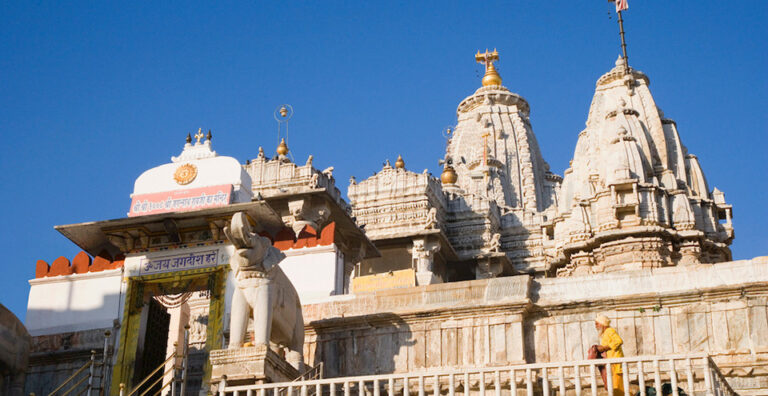
You can find several temples of Lord Shiva and Lord Vishnu. The Eklingji temple is one of the most prestigious temples of Lord Shiva. Similarly, Jagdish temple is one of the largest temples of Lord Vishnu. It is one of the most popular places to visit in Udaipur. Jagdish temple was earlier known as the temple of Jagannath Rai, one of 1000 names of God Vishnu. The temple has become a significant monument in the past few decades due to its unique location, beauty, and history associated with it.
- Jagdish Temple Udaipur has no entry fee
- History of Jagdish Temple Udaipur
The temple was built in 1651 under the reign of Maharana Jagat Singh who ruled Udaipur from 1628 to 1653. Jagdish Temple is the home of Lord Vishnu and an iconic example of the Maru-Gujaru architecture of the era. The Maharana Jagat Singh spent 1.5 million rupees to enhance the structure of the Jagdish temple. The temple was renovated due to the Mughal invasion. The Mughal invaders destroyed many figurines and carvings in the temple as a part of revenge upon Rajput rulers. The Mughals took to vandalism to take out their anger and frustrations on their defeat at the hands of Mewar rulers. According to the old legends, it is believed that the marble slab in the Jagdish temple has magical powers. If you rub your shoulder, knees, or back on the marble, you can get quick relief from the pain. For some people, it might be hard to believe, but the beliefs associated with religion cannot be questioned.
- Best time to visit the Jagdish Temple
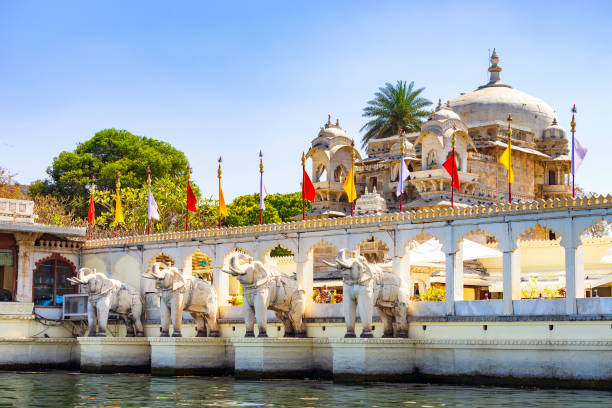
Jag Mandir is a palace built on an island in Lake Pichola. It is also called the “Lake Garden Palace”. The palace is located in Udaipur city in the Indian state of Rajasthan. Its construction is credited to three Maharanas of the Sisodia Rajputs of Mewar kingdom. The construction of the palace was started in 1551 by Maharana Amar Singh, continued by Maharana Karan Singh (1620–1628) and finally completed by Maharana Jagat Singh I (1628–1652). It is named as “Jagat Mandir” in honor of the last-named Maharana Jagat Singh. The royal family used the palace as a summer resort and pleasure palace for holding parties. The palace served as a refuge for asylum seekers for one occasion.
- Jagmandir, Udaipur Boat ride fee
- 450 for per person
- after 03:00 PM
- 700 for per person
- History of Jagmandir, Udaipur
The real threat, which almost decimated the Mewar kingdom for many years, came from the marauding Marathas. The hope of survival revived when in 1817, the British came to their rescue with the “Treaty of Paramountcy” promising restoration of all the hereditary territories and protecting the state from any future invasions. Thereafter, peace and prosperity ensued in the Mewar Kingdom. The pride and glory of Sisodia Rajputs were fully restored. During the revolt in 1857, Maharana Swaroop Singh (1842–1861) saved a number of European families, mostly women and children from Neemuch, which were given refuge in the Jag Mandir Palace. The revolt was popularly known as the Sepoy Mutiny and was also called the Indian Mutiny, (or the first War of Independence) against the British Raj. After the Independence of India from the British rule, on 15 August 1947, at the initiative of Maharana Bhupal Singh, the Mewar kingdom merged with the Indian union in 1949 along with other princely states of Rajasthan.
- Best time to visit the Jagmandir

Lake Fateh Sagar is a massive artificial lake in the city of Udaipur and one of the four lakes in the city that is rightfully called the City of Lakes. It was constructed back in 1678 and houses several small islands within the lake and the majestic Aravalli hills binding the view and making it grander.
- Fatehsagar Lake, Udaipur Boat ride fee
- 30 per person for Regular Boat Ride
- 100 - 200 per person for Motor Boat Ride
- 200 - 400 per person for Speed Boat Ride
- History of Fateh Sagar Lake
- Best time to visit the Fateh Sagar Lake
Evening time is considered the best time to visit Lake Fatehsagar as the weather is quite enjoyable during this time. In general, it is recommended to visit Udaipur from October to March to avoid the scorching heat of the city.
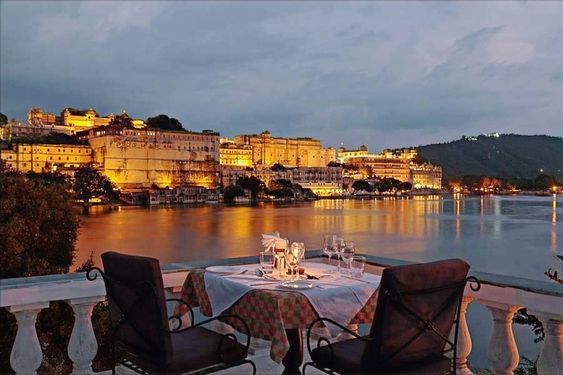
This Ghat which was before referred to as Manjhi Ghat has now surely occupied a permanent location in the hearts of especially the young blood. Ambrai Ghat is a gateway to a delighting experience that passes from the old streets of the area called as ‘Old City’ in Udaipur.
- Ambrai Ghat, Udaipur has no fee
- History of Ambrai Ghat
Ambrai Ghat has situated close to the excellent Pichola Lake and it is a typical visiting site for birds and pigeons which come here infrequently and peeps cheerfully. Notwithstanding these delightful sounds, one can encounter an entrancing perspective on the brilliant sun putting down on the waters of Lake Pichola. One can likewise examine a portion of the wonderful landmarks from this ghat which are situated on various islands of the lake and incorporates Lake Palace, Shiv Niwas, Jag Mandir and so forth The Nagar Parishad of Udaipur has put forth predictable attempts to create and keep up with this ghat by the establishment of marble limits and making accessible wide seats for the remainder of the travelers and guests. A few neighborhood individuals visit this ghat to enjoy the action of swimming and have an invigorating evening. They bring a profound jump into the delightful waters of Lake Pichola and accept the neatness of the spot.
- Best time to visit the Ambrai Ghat
The best an ideal opportunity to visit the ghat is during the long stretches of November to February, that is during the long periods of winter. The climate during these months is generally reasonable for partaking in the delightful spots of Udaipur.
